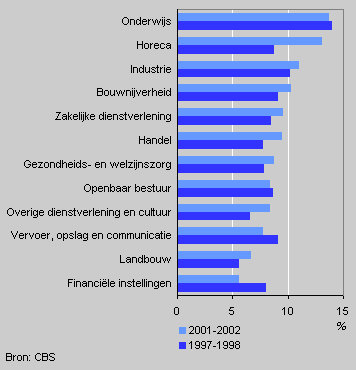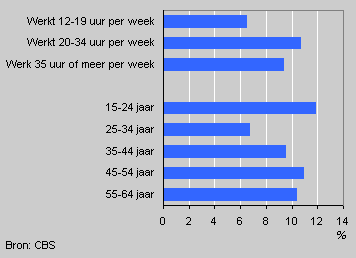More burn-out among hotel and restaurant staff

One in ten workers in ten Netherlands suffer from burn-out. This proportion has remained stable in recent years. In the hotel and restaurant sector, however, the proportion of people suffering from burn-out has increased substantially.
Hotels and restaurants, and education lead the field
Burn-out symptoms are most common among people working in education and those working in hotels, restaurants, cafés, pubs etc. In both sectors around one in seven workers suffer from burn-out.
People with burn-out by sector of industry

In 2001-2002, the percentage of workers with burn-out in the hotel and restaurant sector was one and a half times as high as in the second half of the nineties. The percentage of employees in education with burn-out has not changed, in other sectors, too, the share remains unchanged.
Shorter hours, less burn-out
Just as many men as women suffer from burn-out. There are differences between age groups. Workers aged 25 to 34 are least likely to suffer from burn-out, while at younger – 15 to 24 years – and older ages, more people suffer from this syndrome.
Part-timers who work for between 12 and 19 hours a week have the least complaints. The highest rate of people with burn-out is in the group working for between 20 and 34 hours a week.
People with burn-out by working hours and age, 2001-2002

Greater work pressure increases risk
Pressure of work, no control over their own work and a bad work atmosphere all increase the chance of a worker suffering from burn-out. The physical burden of work is not related to burn-out.
High pressure of work increases the risk of workers suffering from burn-out threefold, compared with workers who have little or no pressure of work.
Workers who have no say in their own work have a three and a half times greater chance of suffering from burn-out as people who do have a say in their work.
Moreover, working in an indifferent or unfriendly atmosphere doubles the chance of burn-out.
Ferdy Otten